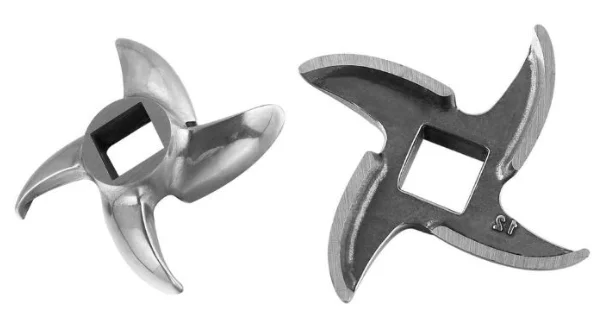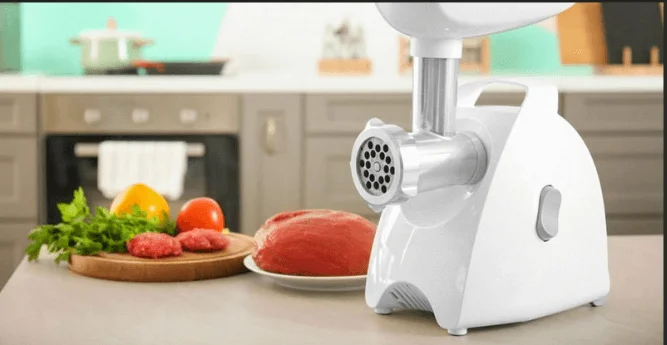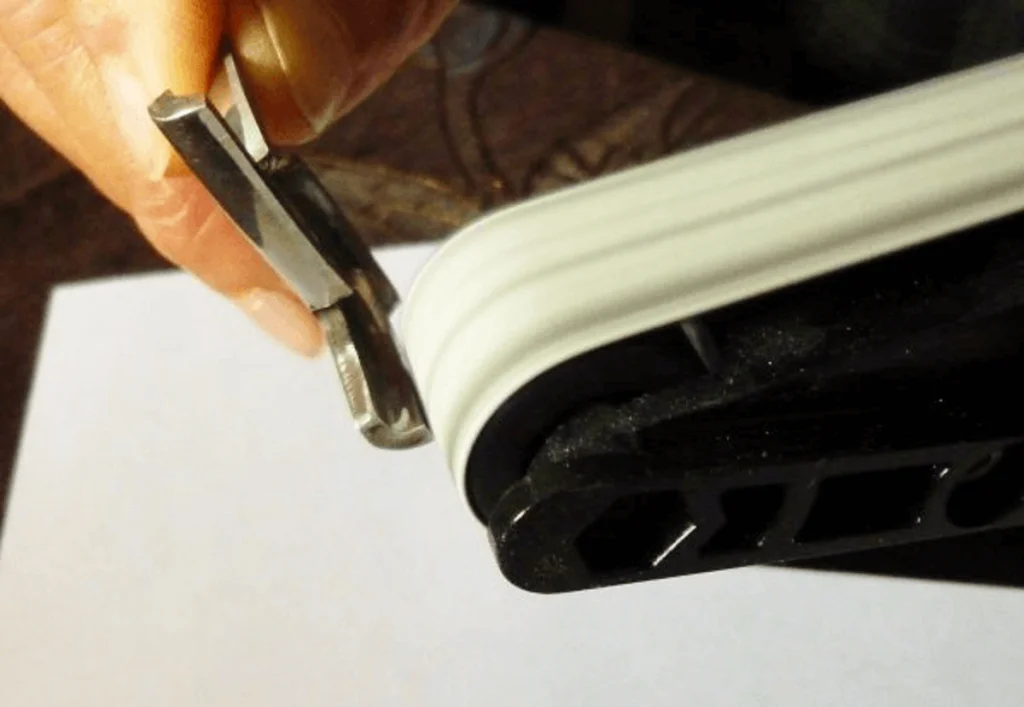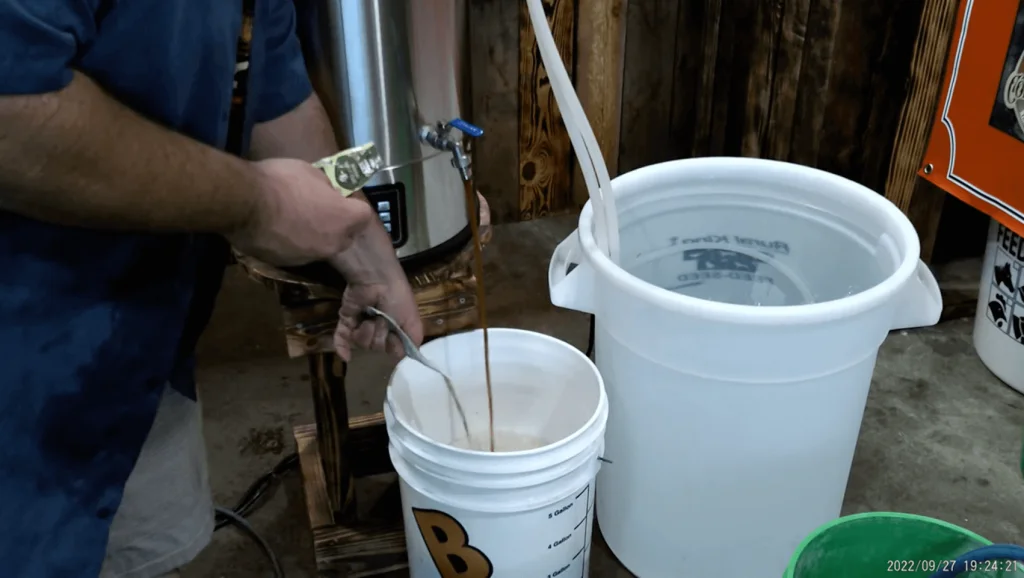Picture this: you’re about to grind your favorite cut of meat, and the blades on your grinder are as dull as a butter knife. Not an ideal scenario. Well, the importance of sharp blades in a meat grinder goes beyond mere convenience. Sharp blades ensure efficient and precise grinding, preserving the texture and flavor of your meat. Dull blades, on the other hand, can result in uneven grinds, mushy textures, and a loss of the meat’s natural juices.
In other words, maintaining sharp blades on your grinder is a game changer. This article is your guide to achieving just that, with a focus on the VEVOR method.
When it comes to meat grinder blades, VEVOR stands out for its cutting-edge technology. Their commitment to delivering top-notch blades is unparalleled, ensuring that your meat processing experience is not only efficient but also of the highest quality.
We’ll explore the unique features that set the VEVOR meat grinder apart in the realm of blade technology, making the process of sharpening a breeze and elevating your culinary endeavors. Let’s sharpen those blades the VEVOR way and transform your meat-grinding game!
Table of contents
Why Sharpening Matters
When it comes to meat processing, the importance of sharpening your grinder blades cannot be overstated. Keeping your blades sharp is not just a matter of convenience but a fundamental aspect of achieving optimal results in meat grinding.
Efficiency in Grinding
Sharp blades cut through meat like a hot knife through butter. This efficiency not only saves you time but also ensures a smoother and more consistent grind. No more struggling with tough cuts or dealing with uneven textures.
Preservation of Flavor and Texture
When meat is ground with precision, its natural flavors and textures are preserved. Dull blades can tear and mangle the meat, leading to a loss of taste and an undesirable mouthfeel. Keeping those blades sharp is your ticket to culinary perfection.
Juice Retention
Picture a succulent burger or a flavorful sausage. Now, imagine losing all those delicious juices during the grinding process. Sharp blades minimize friction and heat, helping your meat retain its moisture and juiciness. Dull blades, on the contrary, can result in a dry and lackluster end product.
Extended Equipment Lifespan
Regular sharpening doesn’t just benefit your meat; it also extends the lifespan of your grinder. Blunt blades put additional strain on the motor, potentially leading to wear and tear. By keeping those blades sharp, you’re not only optimizing performance but also ensuring the longevity of your valuable kitchen equipment.
Signs It’s Time to Sharpen Your Blades
Recognizing when your meat grinder blades need sharpening is key to maintaining peak performance in your meat processing endeavors. Here are some subtle signs that indicate it’s time to give your blades some well-deserved attention:

Decreased Grinding Efficiency
If you notice that your meat grinder is taking longer than usual to process the same amount of meat, it’s a clear indicator that the blades may be losing their sharpness. Efficiency is a good barometer for the condition of your blades, and any decline in speed or ease of operation should prompt you to consider sharpening.
Uneven or Ragged Meat Texture
One of the most evident signs of dull blades is an inconsistent meat texture. If your ground meat appears uneven, with chunks or strands that don’t align with your desired consistency, it’s time to sharpen those blades. Sharp blades ensure a uniform grind, contributing to the overall quality of your culinary creations.
Increased Noise Levels
Pay attention to the sounds your meat grinder makes during operation. Unusual or increased noise levels can be indicative of dull blades straining to process meat. Sharp blades cut through meat with precision, generating less noise. If you notice a significant change in the noise your grinder produces, it’s worth investigating and potentially sharpening your blades.
Smearing or Heating Issues
Dull blades can lead to smearing, where the meat is pushed through the grinder rather than cleanly cut. Additionally, excessive heat during the grinding process may indicate blade dullness. If you observe smearing or notice an unusually warm grinder, it’s a signal to inspect and sharpen your blades for a smoother, cooler operation.
Understanding the Meat Grinder Blades
Meat grinder blades are essential for achieving the desired texture in ground meat. These blades, including flat, cross-shaped, spiral, and curved types, cater to diverse grinding needs. The components of meat grinder include:
Material
Blades are typically crafted from high-quality stainless steel, known for durability and corrosion resistance.
Design
Blades feature a specific design with sharp edges and cutting surfaces to facilitate efficient meat processing.
Types
Various types of blades cater to different grinding needs, such as flat, cross-shaped, spiral, and curved blades.
Cutting Surfaces
Cutting surfaces directly contact the meat, playing a pivotal role in achieving the desired texture.
Teeth
Teeth on the blades aid in pulling the meat into the grinder, ensuring a consistent and effective grind.
Step-by-Step Guide: How to Sharpen Meat Grinder Blades
Now that we have a solid understanding of the importance and anatomy of meat grinder blades, let’s dive into the practical aspect of maintaining sharp blades. Here’s a step-by-step guide on how to sharpen your meat grinder blades:
Step 1: Safety First
Before you begin, ensure your meat grinder is unplugged to avoid any accidental activation. Wear protective gloves to safeguard your hands during the sharpening process.
Step 2: Disassemble the Grinder
Carefully disassemble your meat grinder, separating the blades from the housing. Refer to the manufacturer’s instructions for your specific grinder model. VEVOR’s design typically allows for easy disassembly.
Step 3: Clean the Blades
Thoroughly clean the blades using a mild detergent and warm water. Remove any meat residue or buildup, ensuring a clean surface for sharpening. VEVOR’s user friendly design makes this cleaning process straightforward.

Step 4: Inspection for Damage
Examine the blades for any signs of damage, such as nicks or chips. If you spot any issues beyond regular wear, it’s essential to address them before proceeding with sharpening.
Step 5: Choose the Right Sharpening Tool
Select a sharpening tool suitable for meat grinder blades. VEVOR recommends using a fine grit sharpening stone or a specialized blade sharpener designed for kitchen appliances.
Step 6: Sharpening Technique
Hold the sharpening tool at a consistent angle, typically around 20 degrees, and gently move it along the cutting edge of the blade. Use smooth, controlled strokes to ensure even sharpening. Repeat this process for each cutting surface and tooth on the blade.
Step 7: Honing for Finishing Touch
For a polished finish, lightly hone the blades using a honing rod or leather strop. This step helps refine the sharpness and ensures a smooth cutting experience.
Step 8: Reassemble the Grinder
Once the blades are sharpened and honed, carefully reassemble the meat grinder according to the manufacturer’s instructions. Ensure all components are securely in place.
Step 9: Test Run
Before putting the grinder into full operation, conduct a test run with a small amount of meat. This allows you to assess the sharpness and functionality of the blades.
By following these step-by-step instructions, you can effectively sharpen your meat grinder blades using the VEVOR method. Regular maintenance and sharpening will not only enhance the performance of your grinder but also contribute to the longevity of the blades, ensuring a consistently high-quality meat processing experience.
Meat Grinder Blade Sharpening Tips and Tricks
Pro Tips: Expert Advice for Achieving Razor-Sharp Blades
Consistent Angle is Key
Maintain a consistent sharpening angle, typically around 20 degrees, for each stroke. This ensures uniform sharpness across the entire blade.
Use Lubrication
Apply a food-grade lubricant to the sharpening tool to reduce friction and enhance the sharpening process. VEVOR’s user-friendly design often includes easy access points for lubrication.
Check for Burr Formation
As you sharpen, be attentive to the formation of a burr along the blade edge. This indicates that you are effectively removing material and honing the blade.
Rotate and Repeat
When sharpening, rotate the blade periodically to address different sections evenly. Repeat the sharpening process until you achieve the desired sharpness.
Solutions to Common Challenges Faced During the Sharpening Process
Uneven Sharpness
If you notice uneven sharpness after sharpening, review your technique. Ensure that you maintain a consistent angle throughout the process.
Blade Wobble
Check for blade wobbling during the test run. If you experience wobbling, it may indicate an assembly issue. Disassemble and reassemble the grinder, ensuring all components fit snugly.
Excessive Material Removal
If you find yourself removing too much material during sharpening, adjust your pressure and strokes. Light, controlled movements are more effective than applying excessive force.
Inadequate Sharpness
If the blades aren’t as sharp as desired after the initial sharpening, repeat the process. It may take multiple passes to achieve the razor sharp edge you’re aiming for.
Common Mistakes to Avoid
Using the Wrong Sharpening Tool
Using an inappropriate sharpening tool can damage the blades. Stick to fine-grit sharpening stones or specialized blade sharpeners designed for kitchen appliances.
Neglecting Cleaning
Skipping the cleaning step before sharpening can hinder the process. Residue and buildup on the blades impede the effectiveness of sharpening and honing.
Ignoring Manufacturer Guidelines
Every meat grinder may have unique features and requirements. Ignoring the manufacturer’s guidelines can lead to assembly issues or improper blade maintenance.

Overlooking Safety Measures
Always prioritize safety. Skipping gloves or attempting to sharpen blades while the grinder is plugged in can result in accidents. Follow safety precautions to avoid injuries.
Maintenance Schedule for Blades
Frequency of Sharpening
- For moderate home use, sharpen your meat grinder blades every 6 to 12 months.
- If you use your grinder more frequently or for larger quantities, consider sharpening every 3 to 6 months.
Visual Inspection
- Regularly inspect the blades for signs of wear, nicks, or dullness.
- If you notice any of the signs mentioned in Part III, it’s time for sharpening.
Test Runs
- Conduct a small test run after sharpening to ensure the blades meet the desired sharpness.
- Adjust the frequency based on the performance during test runs.
Long-Term Care: Tips for extending the lifespan of sharpened blades.
Proper Cleaning
- Clean the blades thoroughly after each use to prevent the accumulation of meat residue.
- A clean blade surface enhances the effectiveness of sharpening.
Lubrication
- Apply food-grade lubricant to moving parts, including the blades, to reduce friction.
- Lubrication contributes to smoother operation and prolongs the lifespan of the blades.
Storage Considerations
- Store the meat grinder in a dry and cool environment to prevent corrosion.
- If the grinder won’t be used for an extended period, consider applying a light coat of food-grade oil to the blades for additional protection.
Avoiding Overuse
- Be mindful of overloading the grinder or pushing it beyond its recommended capacity.
- Avoid using excessive force when grinding, as it can contribute to blade wear.
Regular Inspections
- Periodically inspect all components of the meat grinder, not just the blades.
- Address any issues promptly to prevent further damage.
By adhering to a consistent maintenance schedule and following these long-term care tips, you can extend the lifespan of your sharpened blades and ensure that your meat grinder remains a reliable and efficient kitchen companion. Remember, a well-maintained grinder not only enhances performance but also contributes to the longevity of your kitchen equipment.
Last Words
Sharpening your meat grinder blades the VEVOR way ensures not just a task completed, but a performance optimized. The precision engineering and durable materials of VEVOR’s grinder blades promise a cutting-edge experience, quite literally. By embracing the tips and techniques outlined in this guide, you not only maintain the sharpness of your blades but also elevate the efficiency and longevity of your VEVOR meat grinder.
For those seeking the ultimate grinding experience, whether with an electric meat grinder or the heavy-duty electric grinder, VEVOR has you covered. Take the next step in culinary excellence and choose VEVOR for blades that sharpen the way to perfection.





